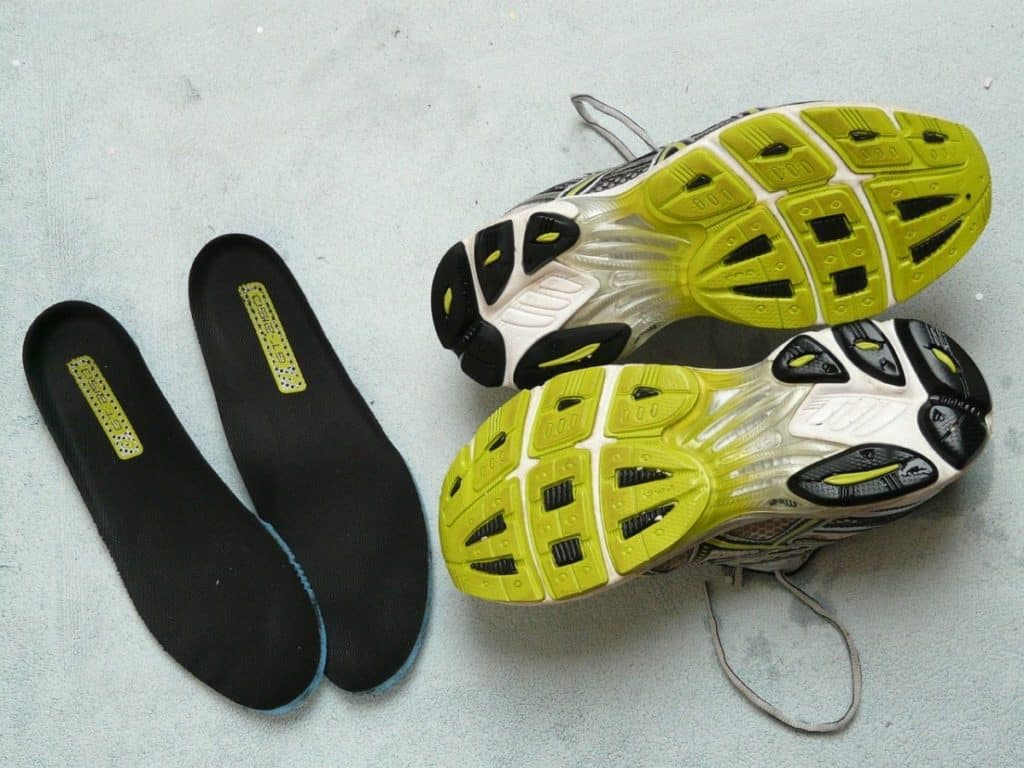Even firefighters can suffer from foot pain and if things are bad enough, you may need insoles to help get you, quite literally, back on your feet again. However, that might leave you wondering if it’s OK to put those insoles in your fire boots?
Insoles or orthotics can be used in fire boots. However, you should make sure that before you use insoles to correct any kind of medical issue, that you talk to a doctor and ensure that you’re using the right type. Failing to do so might cause you further injury in the long-term.
Here is a great option for insoles that can be used in fire boots. I have used these in my turnout boots for years and they go a long way in keeping my feet comfortable for long periods on my feet.

Click Here for More Info and Prices on Superfeet Professional Insoles
Your # 1 priority is keeping your family safe. As a firefighter, I recommend everyone has updated smoke detectors that don’t require battery changes, like these ones from Kidde, a fire extinguisher, like this one from Amerex, and a fire escape ladder if you have bedrooms above the first floor, I recommend this one from Hausse.
What Do We Mean By Insoles?
When we refer to insoles in this article, we don’t just mean any old piece of rubber that you might want to put in your boot. Mainly, we’re referring to orthotics – that is insoles that are prescribed for a specific medical condition.
These insoles might have been purchased from a store or a pharmacy or they might be custom made to help alleviate a more specific condition.
However, what goes for medical insoles (orthotics) also goes for more general insole use (that is those used for comfort).
How To Tell If You Need Insoles For Your Boots
It’s important only to use most forms of insole if you actually need them. It’s not a good idea to self-diagnose the need for inserts into your shoes because if you use the wrong ones, it’s entirely possible to aggravate a problem rather than to relieve the symptoms.
In general, you should see a doctor or a podiatrist (that is a doctor who works in the field of feet exclusively) if:
- You have some sort of deformity of the foot (though we’d imagine that you’d have known about this prior to becoming a firefighter)
- You have issues with the function of your feet or of your ankles that are making it uncomfortable or even painful to walk, run, etc.
- You need additional ankle support – this can be due to a variety of conditions or even because of an injury such as a sprained ankle
- You have already had an injury due to feet problems and are looking to ensure that you don’t have another
However, the most common reason that many people wear insoles is just to keep your feet comfortable, which is especially important for firefighters.
How Your Feet Problems Can Be Diagnosed Effectively
The doctor or podiatrist will need to spend some time conducting a physical investigation of your feet. In particular, they’re going to be looking for any areas that are inflamed or painful and to see if there are any noticeable deformities of the foot.
You might be asked to run or walk or carry out a range of other activities – this is so that they can see how your feet might be used when you’re working as a firefighter and to better understand how you position your feet and ankles when you’re carrying out certain tasks.
Depending on the doctor, they may also have a range of technological devices that can assist them in making a diagnosis. This is a good thing and they won’t hurt or harm you in anyway. Normally, they may use a pad based system which allows them to build a detailed understanding of your gait and the location of any systemic problems you have.
On top of this, they may also order up x-rays, scans, MRI’s, etc. all of which can help with the diagnosis of several other conditions.
It is only once the doctor has a detailed understand of your needs as a firefighter and how your feet and ankles are performing that they will present a diagnosis and any potential relief mechanism such as an insole.
For some conditions the use of an insole will be temporary until other treatment (such as exercises for plantar fasciitis) have had a chance to take hold. For others their use may be permanent.
What Medical Conditions May Require Insoles?

There are many different conditions that can require the use of insoles. Firefighters are, generally speaking, fitter than average which makes some of these conditions less likely, but others can affect anyone:
- Bunions. A bunion is a sort of bump that occurs around the base of your big toe. You may need an orthotic plus a special kind of square-toed boot to reduce the pressure pain that this can cause.
- Bursitis. This is caused by fluid building up in sacs in your toes and your heels. You can relieve the pain this brings by using heel support orthotics.
- Diabetes and diabetic complications. There is a condition known as diabetic neuropathy in which diabetics lose the sensation in their feet.
- Flat feet. This is a condition that you ought to be aware of prior to becoming a firefighter, but it does require orthotics to help position the foot correctly in a shoe/boot.
- Hammertoes. These are a secondary complication from having bunions. You get additional deformities on the ball of the foot as well as on the second-toe. Orthotics are pretty much essential to prevent further damage.
- Heel spurs. This is caused by the growth of additional bone at the base or back of your heel. It can be very painful and inflamed. Orthotics can reduce this pressure and pain.
- High arches. This can start to cause undue stress on the muscles of your feet at any point in your life. It can also trigger other painful foot conditions if left untreated.
- Lower, middle or upper back pain. It doesn’t matter where in your back the pain is – it can have a severe impact on the way that you walk. Changing the way that you walk with orthotics can also reduce back pain.
- Osteoarthritis/Rheumatoid Arthritis. These conditions can lead to a failure to position your feet properly in order to avoid discomfort and thus interfere with the way you walk.
- Plantar fasciitis. A very common cause of heel pain. While orthotics are normally a short-term aid. This condition can often be completely cured with specific exercises.
- Trauma/injury to the foot. As you might expect, sometimes an injury to the foot can make you change the way you walk.
Can You Put Insoles In Fire Boots?
Yes, you can put insoles in fire boots just as you can with any other type of work boot. If you’re having insoles custom made – you might want to raise the topic with the person or company making the insoles so that they can adapt them for the kind of boot that you wear.
However, it’s a good idea to check with your fire department that the specific kind of insole you need to use is approved for use by them.
Is There A Risk Of My Insoles Melting?
We won’t say that there’s never a risk of insoles melting in a firefighter’s boots. What we will say is that if you find your insoles are melting, you’re in such severe trouble that your insoles are very much a secondary concern.
In order for your insoles to melt, the soles of your boots would need to melt and it’s likely that by the time that happened – you’d be on fire.
Prescription orthotics are usually made of materials with very high melting points and wouldn’t deform until they reached a temperature of around 225-250 degrees Fahrenheit.
If your feet get that hot, then things are not going well at all. We’d recommend that you move long before that becomes a possibility.
You Can Discuss The Use Of Insoles With The Occupational Health & Safety Team
If you have any doubts as to the safety of anything you want to use as a modifier to personal protective equipment while working as a firefighter you should speak to someone on the occupational health & safety team, who ought to be able to make checks to ensure that what you propose to do is safe.
If you fire department doesn’t have an occupational health & safety team, you might want to speak to a medical officer or to someone else with a position responsible for organizational health & safety.
Here is a video with some more good insoles for boots:
Conclusion
Can you put insoles in fire boots? Yes, and as long as you’ve had a doctor or a podiatrist examine your feet – it’s quite safe to do so. The biggest risk of using insoles as a firefighter is not the chance of getting burned but the chance of using the wrong kind of insole.
An insole that is medically unnecessary or worse, the wrong type for a given condition, can make your problems worse in the long run and eventually you might not be able to walk properly at all. It’s best to take medical advice before purchasing insoles of any type.
Related Articles
The 7 Best Firefighter Station Boots

